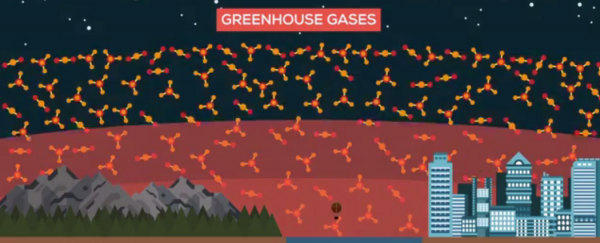Earth and the Moon are the same distance away from the Sun, but that doesn't mean they have even CLOSE to the same atmospheric temperatures. While we experience some, by definition, wonderfully liveable highs and lows on the little blue dot we call home, on the Moon, temperatures can swing from -170 degrees Celsius during lunar night, and 100 degrees Celcius during lunar noon, says the latest episode of MinuteEarth above. That's way beyond the hottest and coldest temperatures ever recorded on Earth, and the Moon experiences them in a single day. So what spares us from those 'loony' temperatures?
Our atmosphere might not look like much - because, you know, it's invisible to the naked eye - but it does an amazing job of blocking out the most intense rays from the Sun during the day, and retaining the heat of the Sun during the night. How does it manage this?
Our atmosphere needs to be littered with electrically charged particles to push electromagnetic waves around and absorb infrared radiation. While 99 percent of Earth's atmosphere is made up of oxygen and nitrogen molecules, which can't absorb infrared radiation, the other 1 percent - made up of water, ozone, nitrous oxide, carbon dioxide and methane molecules - can, which helps to insulate Earth.
They're such good infrared absorbers, says Henry Reich in the video above, that they manage to intercept about 90 percent of Earth's outgoing heat. But here's the problem - ice records have shown that a small natural increase in the carbon dioxide concentration of Earth's atmosphere can lead to a significant increase in the amount of heat that's retained. Add to this the increase in atmospheric carbon dioxide via man-made pollution, and the perfect balance that makes Earth, Earth, and not the Moon, becomes a whole lot more difficult to maintain.
Watch the episode of MinuteEarth above to get a glimpse of the giant game of pinball that's being played so many kilometres above our heads by some very hard-working molecules.
